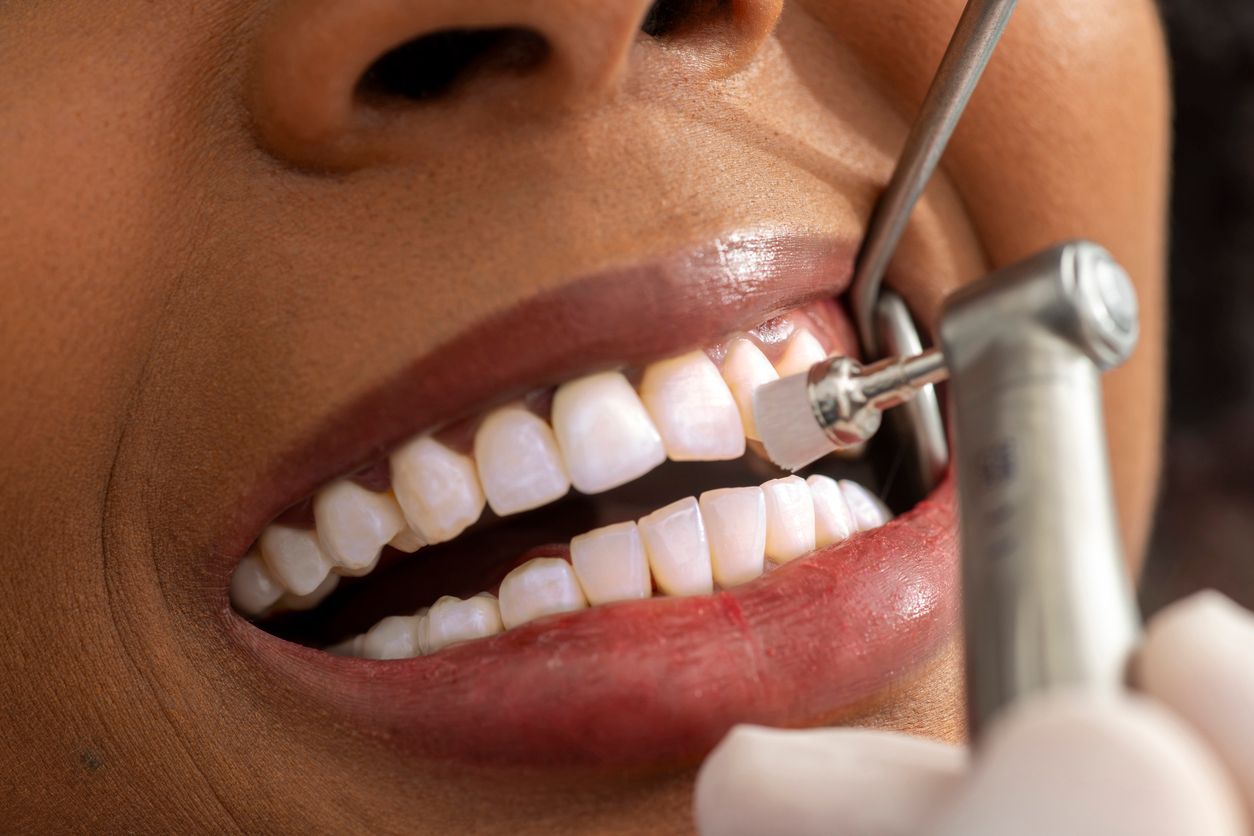All-on-4 Implant Dentures vs. Traditional Implant Dentures: Understanding the Differences
All-on-4 dental implants are known to be very convenient for those requesting permanent teeth. Compare All-on-4 to traditional dental implants here.
Imagine regaining your smile and the joy of biting into your favorite foods with confidence, but without the long, drawn-out process you might expect. What's the secret?
All-on-4 dental implants!
Today we're diving into the nuances of All-on-4 dental implants compared to traditional implant dentures, guiding you towards making an informed decision for your oral health.
Overview of Dental Implant Solutions
Dental implants are a modern solution for missing teeth. These implants act as fake roots for new teeth. They are made from materials that your body accepts, like titanium.
When you lose a tooth, not only does it affect your smile, but it can also lead to other teeth moving into the empty space. This can cause a bunch of problems down the line. Dental implants help prevent these issues by filling in the gaps.
The Need for Permanent Tooth Replacements
Losing teeth can make life hard. It can change the way you look, make eating difficult, and even affect how you talk. This is why getting a permanent replacement for missing teeth is important.
Not only does it help you look and feel better, but it also keeps your mouth healthy. When teeth are missing, the jawbone can start to weaken.
Dental implants help keep the jawbone strong because they mimic the action of natural teeth. This keeps the bone healthy and prevents it from shrinking.
Introduction to All-on-4 Dental Implants
All-on-4 dental implants are a game-changer in the world of dental restoration. This method allows for the replacement of all teeth in either the upper or lower jaw using just four implants.
The implants are placed in specific areas of the jaw that tend to have more bone, even if bone loss has occurred. This is key because it often means patients can skip the extra step of bone grafting, which is needed when there isn't enough bone to support implants.
Advantages
The biggest advantage of All-on-4 dental implants is how they offer a faster and less invasive path to a full smile. Since only four implants are used, the surgery is simpler and recovery is quicker.
Patients can often have a temporary set of teeth placed on the same day as their surgery, which means less time without teeth. This approach not only improves the appearance of one's smile but also enhances chewing function and overall quality of life.
Plus, by acting like natural teeth roots, these implants help preserve the jawbone and prevent further bone loss.
Traditional Implant Dentures
Traditional implant dentures take a different path compared to All-on-4 dental implants. In this traditional method, more implants are usually needed to support a full set of dentures. Each implant is placed into the jawbone to act as a root for the artificial teeth.
This process can mean more surgery and, often, a longer time to heal. Patients might need to wait several months before they can enjoy the full benefits of their new teeth.
When Bone Grafts are Necessary
One key aspect of traditional implant dentures is the potential need for bone grafts. If a patient has lost a lot of bone in their jaw, which can happen after losing teeth, they might not have enough bone for the implants to hold onto.
In these cases, a bone graft is done to add more bone to the jaw. This step can add more time and cost to the process of getting dentures. However, it's a critical step for ensuring the implants last a long time and provide the support needed for new teeth.
Comparative Analysis
The All-on-4 approach uses just four implants in areas of the jaw that usually have more bone. This means that even if someone has lost a bit of bone, they
might be a good candidate for this procedure.
On the other hand, traditional implants might involve more implants and can require a patient to undergo bone grafting if they don't have enough bone. This makes the traditional method a bit more complex and can lengthen the time to get your new teeth.
Time and Recovery
Recovery time is another big difference between these two methods. Patients who go for All on 4 implants can often have a temporary set of teeth placed on the same day of surgery. This means you can start enjoying
your new smile almost immediately.
However, with traditional implants, the healing process can take longer. It might be several months before the final teeth can be placed.
Both All-on-4 and traditional dental implants are designed to last a long time. They can help you eat, talk, and smile confidently.
Cost Implications
Cost is an important factor to consider when choosing between All-on-4 and traditional dental implants. Generally, All-on-4 can be less expensive because it involves fewer implants and often does not require bone grafting.
Traditional implants might end up costing more, especially if you need extra procedures like bone grafts. However, the total cost can vary based on your specific needs and the details of your dental plan.
Consultation with a Dental Professional
The best step to take is talking with a dentist who knows a lot about implants. They can look at your mouth, take X-rays, and give you advice based on what they see. Your dentist will explain the benefits and any downsides of each option.
This conversation is important. It helps make sure that whatever choice you make, it's the right one for your health and happiness. Your dentist's goal is to help you find a solution that looks good, feels right, and lasts a long time.
Achieve Your Best Smile
Choosing between All-on-4 dental implants and traditional options depends greatly on personal needs and health. Each path offers a way to restore smiles and confidence. Ultimately, the decision should align with professional advice, aiming for a solution that best fits your lifestyle and oral health goals.
Dr. Samuel Cho and the Braddock Family Dental team do more than work on teeth: we care about you personally, and are honored to be your oral healthcare partners.
Get in touch today to find out how we can help you achieve and beautiful and healthy smile!





